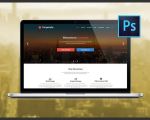- 1-How to Start with Python Web Development
- 2-Choosing the Right Framework for Your Project
- 3-Building a Basic Website Using Python Step by Step
- 4-Best Practices for SEO Optimization in Python Websites
- 5-Real-World Examples and Personal Insights
1. How to Start with Python Web Development
Designing a website with Python is an exciting journey that blends creativity with technical skills. Python's readability and extensive libraries make it an excellent choice for beginners and professionals alike. When you decide to build a website using Python, the first step is understanding the core tools and environment setup. This includes choosing an appropriate code editor, setting up a local development server, and installing necessary packages through pip, Python’s package installer.
Starting with Python web development also means getting familiar with basic web technologies such as HTML, CSS, and JavaScript, as Python handles the server-side logic, but the front-end still requires these foundational skills. Combining these elements allows you to create dynamic, interactive web pages efficiently. One important note is to keep the project scope manageable at first — starting small helps avoid overwhelming complexity and ensures you build a solid foundation.
2. Choosing the Right Framework for Your Project
One of the greatest advantages of using Python for web design is the wide variety of frameworks available. Frameworks provide pre-built components and tools that significantly speed up development. Some of the most popular Python web frameworks include Django, Flask, and FastAPI. Each framework suits different project types:
- Django: A full-stack framework that follows the “batteries-included” philosophy, perfect for complex, data-driven sites requiring built-in admin interfaces and security features.
- Flask: A lightweight and flexible micro-framework ideal for smaller projects or when you want full control over components.
- FastAPI: A modern framework designed for building APIs quickly with automatic documentation and fast performance.
Choosing the right framework depends on your project requirements, team skillset, and scalability plans. For example, a startup aiming to launch a minimal viable product quickly might lean toward Flask, while an enterprise application with robust data management may find Django more suitable.
3. Building a Basic Website Using Python Step by Step
Let’s walk through a simple example of designing a website with Python using Flask. Flask’s simplicity allows beginners to grasp the essentials quickly without overwhelming boilerplate code. Here’s the process breakdown:
- Setup: Install Flask via pip and create your project folder structure including folders for templates and static files (CSS, JavaScript).
- Create the app: Write a basic Python script that imports Flask, initializes the app, and defines routes to handle different URLs.
- Templates: Use Jinja2 templating (built into Flask) to render HTML dynamically. This allows you to pass data from Python code to the web pages.
- Run and test: Launch the local development server and view your website in a browser. Iteratively test functionality and design.
This hands-on example is a great way to internalize how backend code interacts with frontend display. For those who want to extend functionality, integrating databases like SQLite or PostgreSQL, and adding user authentication are natural next steps. Websites built with Python can scale from simple blogs to full-featured platforms by gradually enhancing features.
4. Best Practices for SEO Optimization in Python Websites
SEO is critical for website success, and designing a website with Python doesn’t exclude you from optimizing your site for search engines. Some practical SEO strategies include:
- Clean URLs: Use descriptive, human-readable URLs in your routes to improve indexing.
- Meta tags: Dynamically generate meta titles and descriptions with relevant keywords on each page using your templates.
- Mobile responsiveness: Ensure your HTML templates and CSS frameworks support responsive design to cater to mobile users.
- Fast loading times: Optimize images, leverage caching, and minimize server response times to boost page speed — a key SEO factor.
- Structured data: Implement schema markup where relevant to help search engines better understand your content.
Incorporating these SEO best practices at the design stage can give your Python-based website a strong competitive advantage. For developers looking for tools or services that can complement their projects, SitePoint 24 offers excellent resources and recommendations for web hosting, SEO services, and more.
5. Real-World Examples and Personal Insights
Many successful websites started as simple Python projects. Take Instagram, for instance — it initially used Django due to its rapid development capabilities and robust admin interface. This choice allowed the team to focus on user experience and scaling the product without reinventing the wheel.
Personally, I recall working on a small e-commerce site using Flask. By focusing on modular design and SEO-friendly URLs, the site achieved impressive organic traffic growth within six months. This experience underscores the importance of not just coding but thinking strategically about user engagement and discoverability from the start.
Designing a website with Python isn’t just about writing code — it’s about crafting an experience that resonates with visitors and performs well in search engines. With the right approach, resources like SitePoint 24, and continuous learning, anyone can master this rewarding skill.








